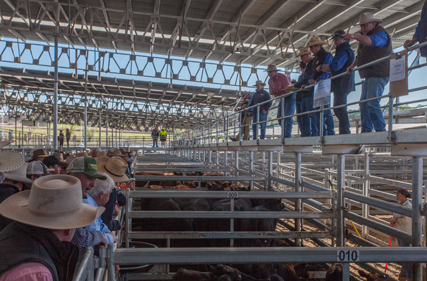 By Simon McKittrick
By Simon McKittrick
It’s been a big week across all markets, with a mix of price movements depending on where you’re selling. Widespread rain across the NT, QLD, and parts of NSW has injected confidence back into the market, slowing turnoff in some regions while tightening supply in others. The US remains hungry for Aussie beef, but domestic conditions are keeping things interesting as producers reassess their selling strategies.
Our thoughts are with the flood affected communities in southwest Queensland. Social media is capturing the devastation in real time, but the full extent of stock and animal losses won’t be known until the floodwaters recede and property owners can assess the damage. Reports indicate the flooded area is approximately twice the size of Victoria!
This Week in the Cattle Market – What’s Happening?
The Eastern Young Cattle Indicator (EYCI) is currently sitting around 659c/kg, reflecting renewed restocker demand. Meanwhile, the Aus dollar is holding just over US 63 cents, adding some competitiveness to export prices.
- Domestic Feeder Steer $3.80/kg
- Domestic Feeder Heifer $3.40/60/kg
- Heavy Feeder Steer $3.80/kg
- Angus Heavy Feeder Steer $3.95/$4.20/kg
- Slaughter Cow $3/3.40/kg lwt
- MSA Heifer/Steer $6.50/7.20c/kg hcw
(Prices are indicative and vary by region.)
Saleyard Cancellations
Several cattle sales have been cancelled this week due to low bookings, including todays Roma store sale, the largest in Australia, along with Charters Towers and Blackall. Other sales facing potential disruptions include Casino, Gracemere (down to 500 hd from 2,500 last week), and Emerald (500 hd booked, but more rain expected).
Early week sales saw reduced yardings, with Tamworth down by 1,000 head after heavy rain. Forbes yarded 1,251 head. Warwick’s sale today has 1200 head booked.
Store Markets
The widespread recent rain has injected renewed confidence into store markets, particularly in the north, where restocker demand has surged. Supply has tightened in response, pushing prices higher. However, drier conditions in southern areas are still influencing decision making, with some producers opting to offload cattle before winter sets in.
Feedlot Rates
Feeder cattle prices have strengthened on the back of widespread rain, with numbers tightening in the north as graziers hold onto cattle. The Feeder Steer Indicator has lifted to 368c/kg, with heavy flatback feeders around 375-380c/kg and Angus feeders consistently making 395-420c/kg. Rain-affected supply chains have also led to some logistical challenges, further supporting the market.
Slaughter Prices
Processor demand remains firm, with good competition for heavy and finished cattle. Cows are making up to $3/3.40c/kg lwt, with MSA cattle consistently around high $6kg to north of $7kg HSCW. While slaughter rates have dipped slightly due to wet conditions slowing yardings, export demand especially from the US continues to provide solid support.
Looking Ahead
- Rain Impact: With moisture now on the ground across key cattle-producing areas, expect a short-term tightening of supply as producers reassess selling plans.
- US Market Strength: Beef exports remain strong, with the US continuing to drive demand amid a reduced local herd.
- Autumn Outlook: If the current rain pattern continues, further restocker demand could keep young cattle prices firm in the coming weeks.
Final Thoughts
The recent widespread rain has provided a much needed confidence boost to the market, particularly in northern regions where restocker demand is strengthening. However, the devastating flooding in southwest Queensland has created significant challenges, with stock losses and infrastructure damage yet to be fully realised.
Despite this, overall sentiment remains positive, with supply expected to remain tight in the short term, keeping prices firm, particularly in the store and feeder markets. Processor demand is also increasing as wet conditions limit cattle access, potentially driving slaughter prices higher in the coming weeks.
In the south, follow-up rain is still needed if it doesn’t arrive, we could see more breeding females coming forward to the market prior to colder weather.
